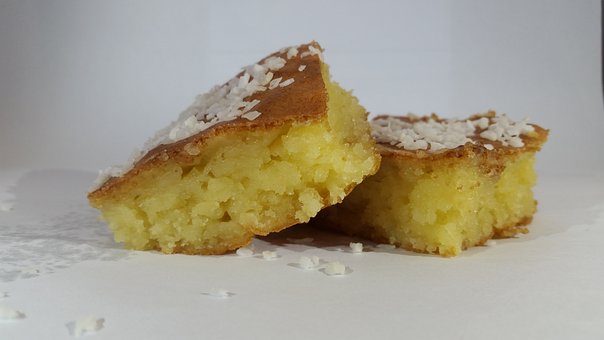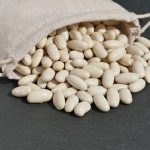Cassava flour is an alternative to regular flour that is gluten-free and grain-free. It is also rich in nutrients. I love this flour, but some people seem to find it intimidating. You can use cassava flour and expand your paleo and grain-free baking horizons!
Cassava flour is becoming more and more popular as a replacement for regular flour for grain-free and gluten-free diets.
People who are on restrictive diets, like Whole30 or paleo, often have to replace a lot of ingredients in their meals, including sugar, cheese, black beans, brown rice, peanut butter, and lentils. Once you get used to it, it all becomes automatic. And the best part? You feel amazing.
When people are on restrictive diets, they usually have to mix different flours together to get the same consistency as wheat flour. Although no one enjoys this process, cassava flour provides the best replacement for flour in many cases. While this new flour may be a godsend for those who cannot have grain, we should cover a few things before proclaiming it as the best thing since sliced bread.
How is it made?
The Cassava plant’s whole root is used to make cassava flour. The root is peeled. Then it is dried. Lastly, it’s ground up to make a flour substance. Scrape the roots with a grater to create a fine mash, or use a food processor for a more even result.
Then, press and dry the roots. Try to get the roots as dry as possible, then lay them out on a drying rack. The substance remaining is the brightness that is cassava flour. This new flour could be the answer to all of your substitute flour needs.
Tapioca Flour and Cassava Flour
No. Cassava flour and tapioca flour are not the same thing. There are variations between cassava flour and tapioca flour, although some people use the terms interchangeably.
Tapioca is a starch extracted from the cassava root. This happens using a process of washing and pulping. The pulp is then squeezed to extract a starchy liquid. Once the water has evaporated, the flour that is left is tapioca flour.
Cassava flour is made from the entire root. The cassava flour is made by peeling, drying and grinding the root. The cassava root is dried and ground into a flour, which contains more dietary fiber than tapioca flour.
After cassava is peeled and dried, it is ground into a fine powder to make cassava flour. Cassava flour is a very mild, very powdery flour that is so light it tends to create a cloud as you whisk it together with the other dry ingredients.
Baking with Cassava Flour
You can usually swap out wheat flour and all-purpose flour for cassava flour using a 1:1 ratio, but it’s not perfect for every recipe. Cassava flour is very similar in consistency to all-purpose flour, but it is lighter.
This means baking with it can be tricky. Cassava flour is lighter, yet it absorbs more liquid. To make substitutions in a recipe, you may have to experiment a bit to find the perfect amount for each recipe.
If you are new to cooking, it is advisable to begin by using a recipe that you are already familiar with. The better you are at pinpointing exactly where and why a recipe goes wrong, the better off you’ll be.
When you try to bake something new, it’s helpful to have a previous success to fall back on. This way, you’ll be able to more easily identify what needs to be changed in order to get the results you want.
Tips for Success
- It might say you can substitute a cup for a cup, however, cassava flour soaks up more water and therefore is more dense than others may be. You may end up needing to use slightly less cassava flour than you may think.
- Recipes that require large amounts of flour have a tendency to bake faster on the outside while the inside may still be rather “doughy”.
- Cassava flour is quite dusty. Be aware of this when wanting to throw it around like you would with all-purpose flour. If Julia Child compels you to add a bit of flair to your food preparation, be prepared to dust the top of the fridge! Are we exaggerating? Well, maybe a little…
- While it isn’t too overpowering, this flour is made from a root so it does leave a bit of a nutty flavor to some recipes. You’ll want to keep this in mind for the final taste of any baking project you choose.
Cassava Toxins
The ingredients in cassava root have cyanide components that can be harmful if consumed in large quantities. However, these toxins are also found in almonds and spinach. They are only toxic if they are eaten raw.
The process of making cassava flour removes the potentially harmful compounds, making it a safer product to consume.
Cassava Flour is NOT Low-Carb
Cassava flour has a high-carbohydrate profile. Even though cassava flour is healthy, you should still be careful about how much you eat if you are following a low-carb, low-sugar, or paleo diet.
For every 100 grams, cassava flour has double the calories and carbs as a sweet potato. Just like everything else in life, moderation is key.
If you use cassava flour for every meal, you may have an insulin spike.
Cassava Flour Bread Mixes
I came across something really great when researching this article: paleo bread mix subscriptions. The bread is called “Legit Bread” and it is a subscription based on cassava flour. I’m not sponsored by them or anything, I just think they look really cool.
The bread is very cheap and looks great. Seems like it might be worth a shot!
The Best Cassava Flour Tortilla Recipe
The only ingredients you need for these cassava flour tortillas are a small amount of basic ingredients, which taste and feel a lot like wheat-based flour tortillas.
This recipe uses a combination of cassava flour and tapioca starch/flour, which makes the raw dough more stable and easier to handle.
The tortillas you’ll make with this recipe are easy to fold, and have a delicious chewy texture without using any cheese.
These tortillas are not only gluten-free and grain-free, but they are also naturally dairy-free, egg-free, nut-free, sugar-free, and vegan. They can fit almost any dietary restrictions.
Cassava Tortilla Ingredients
- Cassava flour – I usually buy Otto’s Naturals brand cassava flour from Amazon.com, but I’ve also had good luck with cassava flour from nuts.com. It’s a very light powder, though, so be mindful of that as you scoop it from the bag, and as you whisk it with the other dry ingredients!
- Tapioca starch – Sometimes referred to as tapioca flour, tapioca starch helps make the raw tortilla dough easier to handle, especially after it’s been shaped, and you’re trying to move it from the preparation surface to the hot skillet.
- Kosher salt – Salt brightens the flavor of these flour tortillas. I use kosher salt since it’s easier to measure properly than table salt.
- Baking powder – Baking powder is responsible for the rise in these tortillas in the skillet. Baking powder usually contains a tiny bit of cornstarch in it, so if you’re strictly grain free, be sure to choose a variety without starch.
- Shortening or coconut oil – Using a fat that’s solid at cool room temperature (like virgin coconut oil or Spectrum nonhydrogenated vegetable shortening) helps make the raw tortilla dough from feeling greasy and slippery.
- Water – Be sure to use warm, but not hot, water that will help the shortening to mix fully into the dry ingredients without melting the fat. For the most precision, measure your water by weight (6 fluid ounces is a volume measurement but for water, it also weighs 6 ounces).
Tips for achieving the right dough consistency
The secret to making a cassava flour dough that you can shape and transfer to a hot skillet without it falling apart is the right proportion of ingredients.
Use less water than usual when making the dough, as it won’t hold together as well otherwise. The dough should be moist enough to stick together when pressed, but not too wet.
To fix dry dough, slowly add water while kneading. Don’t add too much flour or the dough will be too delicate.
READ MORE: Paleo Diet Guide For Beginners









